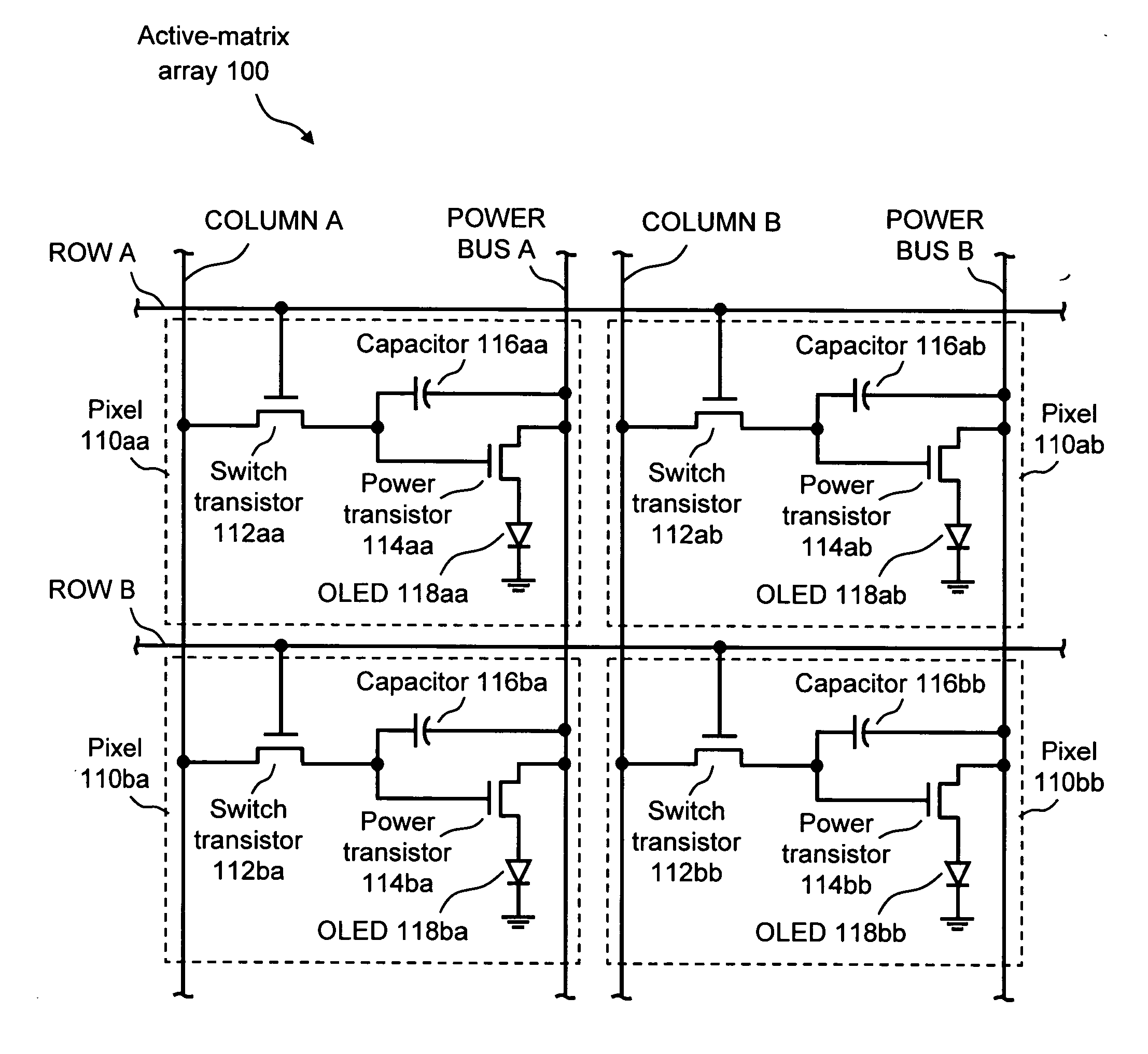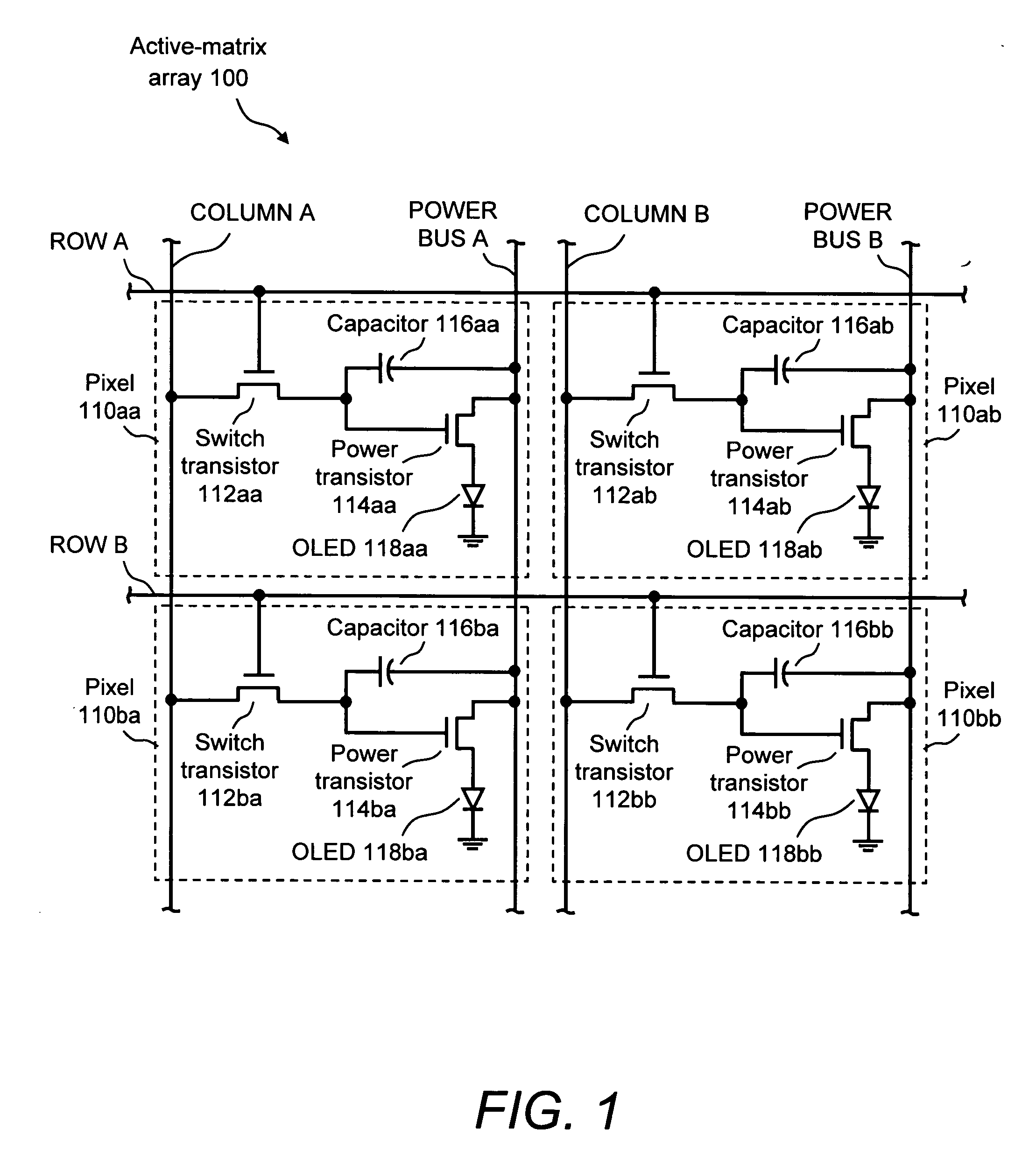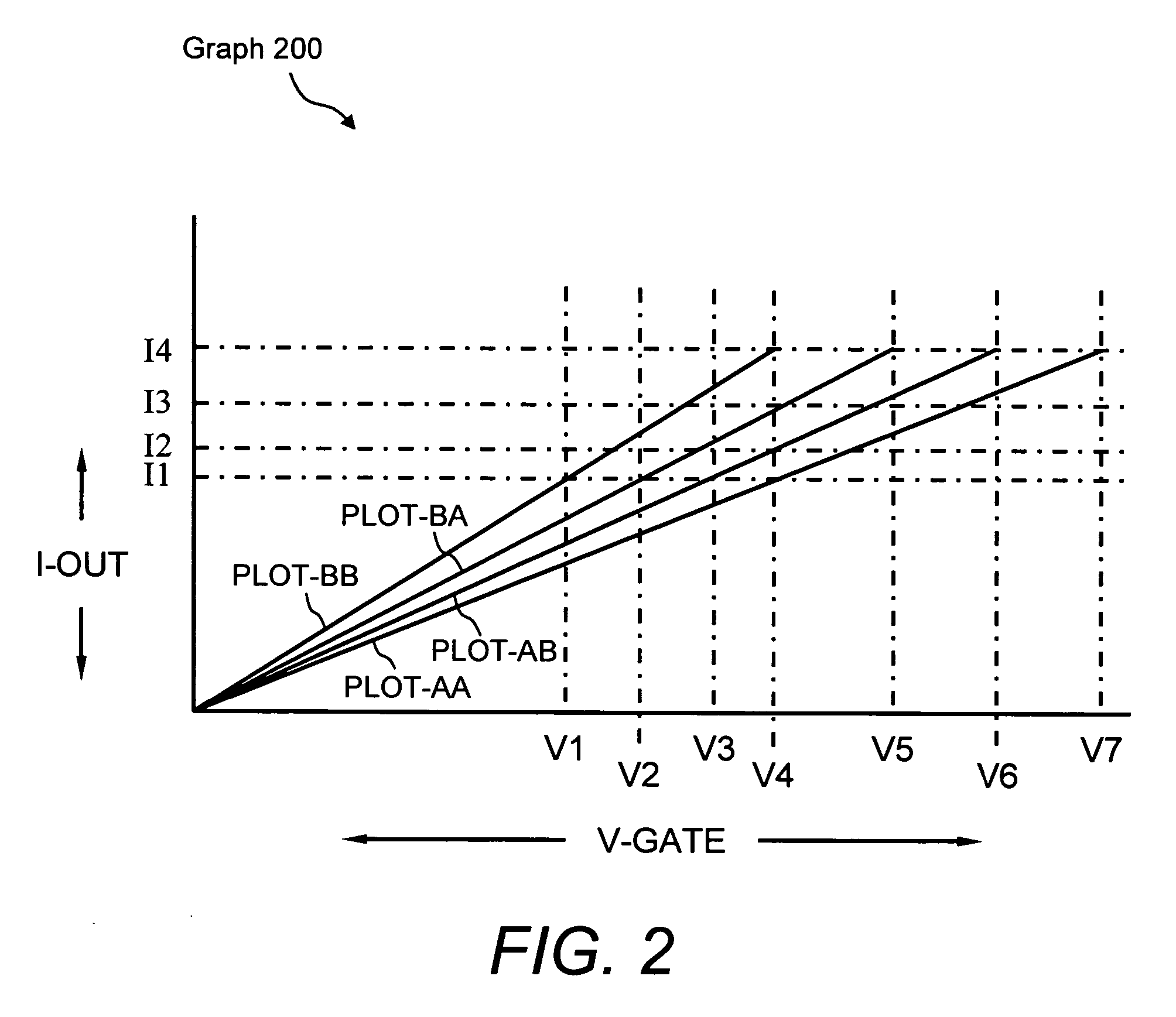System and method for compensation of active element variations in an active-matrix organic light-emitting diode (OLED) flat-panel display
a technology of organic light-emitting diodes and active elements, which is applied in the field of system and method of providing brightness uniformity in the active matrix oled flat-panel display, can solve the problems of display subject to more serious threshold non-uniformities, current non-uniformities between pixels, and non-uniform brightness
- Summary
- Abstract
- Description
- Claims
- Application Information
AI Technical Summary
Benefits of technology
Problems solved by technology
Method used
Image
Examples
first embodiment
[0028]FIG. 3 illustrates a functional block diagram of a brightness compensation system 300 for providing brightness uniformity within an active-matrix OLED flat-panel display in accordance with the invention. Brightness compensation system 300 is built into the display interface circuitry of an active-matrix display 305, which is representative of a typical active-matrix OLED display under test. Brightness compensation system 300 includes a system controller 310, a timing generator 312, a test brightness generator 314, a pixel address generator 316, a video formatter 318, a multiplexer (MPX) 320, an MPX 322, a memory 324, a pixel adjust device 326, a level shifter and driver 328, a current sensor 330, an analog-to-digital (A / D) converter 332, and a DC power supply (P / S) 334.
[0029] System controller 310 is representative of a standard microprocessor device, such as a Philips 8051 8-bit microcontroller or a Motorola 6816 16-bit microcontroller. Alternatively, system controller 310 is...
second embodiment
[0059]FIG. 5 illustrates a functional block diagram of a brightness compensation system 500 for providing brightness uniformity within an active-matrix OLED flat-panel display in accordance with the invention. Brightness compensation system 500 illustrates a minimal set of additions to brightness compensation system 300 of FIG. 3, in order to accomplish “n-at-a-time” element or cell measurements.
[0060] More specifically, as compared with brightness compensation system 300 of FIG. 3, the time required to measure the corrections necessary to provide brightness uniformity to all of the active matrix elements (cells) of active-matrix display 305 are reduced by a factor “n”, where “n” is the number of elemental columns being tested in parallel, a cell at a time. This is generally accomplished by including “n” current sensors, “n” A / D converters, multiplexing switches to select the group of “n” POWER BUSES, and a data signal source programmed to provide the proper test signal to the selec...
PUM
 Login to View More
Login to View More Abstract
Description
Claims
Application Information
 Login to View More
Login to View More - R&D
- Intellectual Property
- Life Sciences
- Materials
- Tech Scout
- Unparalleled Data Quality
- Higher Quality Content
- 60% Fewer Hallucinations
Browse by: Latest US Patents, China's latest patents, Technical Efficacy Thesaurus, Application Domain, Technology Topic, Popular Technical Reports.
© 2025 PatSnap. All rights reserved.Legal|Privacy policy|Modern Slavery Act Transparency Statement|Sitemap|About US| Contact US: help@patsnap.com



